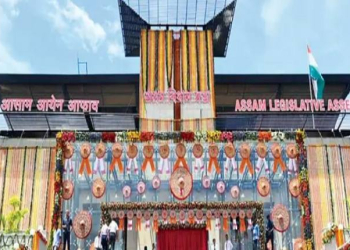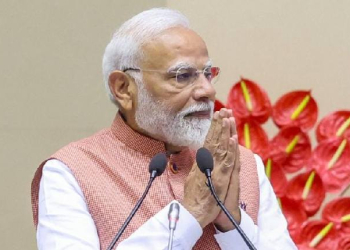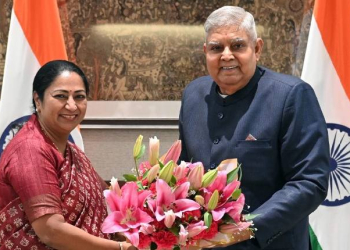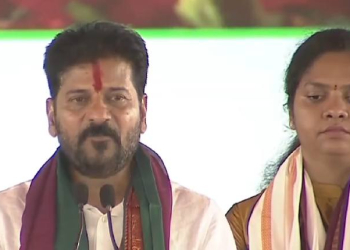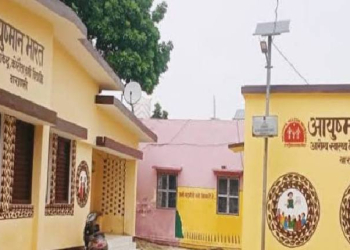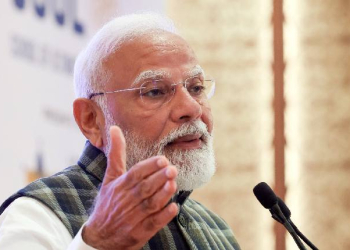New Delhi: There were many twists and turns in this race to corral the errant princes who continued to pine for their freedom.
Secretary of States V.P. Menon, with serious skin in the game, has never got due credit for fronting this entire operation worked tirelessly and assiduously, using persuasion, coercion, coaxing, convincing and every known gambit known to man to bring these princes on board.
Sardar trusted him implicitly and like he had told Mountbatten at the very outset in this frenetic journey — Will you give me the full basket of apples? — he wanted it all, but without Menon, he wouldn’t have got all. There were always the exceptions, those playing tough and difficult.
One such player was Danta. He was an odd man out and he needed persuasion. The small state in Gujarat called Danta, which was no more than 347 square miles in area and had a population of a little over 31,000, held out.
Nevertheless, the ruling family had an importance of its own, as it claimed to be the head of the Parmar clan of Rajputs, and to have descended from the celebrated Emperor Vikramaditya of Ujjain. After the merger of the Gujarat states, repeated efforts were made to get into contact with the Maharana of Danta.
He was a deeply religious man and would spend several hours a day performing religious rites and ceremonies. He used, in fact, to be so immersed from eight in the evening till nine the next morning throughout the period from June to September every year.
“Eighty per cent of the population of his State consisted of Bhils,” Menon recalled. “This aboriginal population presented a most difficult problem of law and order to Bombay. We were anxious to avoid taking over the State against the wishes of the Maharana.
“On 7 October 1948 the Maharana wrote to me that owing to his religious bent of mind and his dwindling interest in mundane affairs, it was not possible for him to attend to State work. He begged to be allowed to abdicate and requested that his son and heir apparent be recognised as the Ruler.”
The Government of India accepted the proposal. The new ruler signed the merger agreement on October 16, 1948, and the state was taken over by the Bombay Government on November 6.
Another key State that held out in the Deccan was Kolhapur, which had succession issues. The Maharaja was eventually invited to Delhi for discussions. The conversations proceeded in a friendly spirit and in February 1949 the Maharaja signed an agreement merging his state with Bombay. His Privy Purse was fixed at Rs 10 lakh.
To quote Menon again: “Some time back we had received a petition requesting the Government of India to appoint a Commission to enquire into the validity of the adoption of the ruler. The Maharaja was aware of this and the fear that his title to the gaddi might be questioned may have hastened his decision.
“I should add here that, with but one exception, the Government of India refused to upset any decisions relating to succession taken by the Political Department before the transfer of power, irrespective of the merits. We felt that if we started interfering, it would have a most unsettling effect.
“The administration of Kolhapur State was taken over on March 1, 1949, at a big public function at which B.G. Kher, the Premier of Bombay, presided. On behalf of the Government of India, I handed over the administration to the Government of Bombay.
The days of the small rulers were irretrievably gone; they had to bow to the inevitable and gracefully agree to merge their states with the provinces they were situated in and earn the quiet pleasures of pensioned life.
Take the Vindhya States for instance. Bound on three sides by the United Provinces and on the south by the Central Provinces, there lies a tract of lowland comprising two distinct territorial divisions, Bundelkhand and Baghelkhand, which, between them, consisted of 35 states. Here again there was much consternation and confusion, a Covenant was scrapped, a new one was drafted.
A few wrong turns later, and with the Maharaja of Rewa acting difficult initially, Sardar invited the premiers of both the United Provinces and the Central Provinces for a discussion regarding the distribution of Vindhya Pradesh between those two provinces.
The discussion revealed a wide divergence of opinion between the two Premiers. Sardar wanted them to come to a mutual agreement and was unwilling to force a settlement on them. But agreement was not reached and the Government of India had no alternative but to take over Vindhya Pradesh as a centrally administered area.
This was done on January 1, 1950. The arrangement had its advantages, for one thing, if ever these two divergent areas of Bundelkhand and Baghelkhand were to be fused into one compact whole and be properly developed, it was the direct administration of the Government of India that could best achieve that task.
The Madhya Bharat Union was next. It was by far the largest attempted up to that time, comprising an area of nearly 47,000 square miles, with a population of over 70 lakh and a revenue of about Rs 8 crore, was inaugurated by Nehru on May 28, 1948. Despite two potentially oversized egos of Gwalior and Indore, which needed to be accommodated, the task was accomplished by Menon with his delicate diplomatic skills.
This was followed by Patiala and East Punjab States Union (PEPSU). Again, let Menon take up the narrative: “While informal discussions were taking place in regard to the future of the Punjab States, trouble arose between the Raja of Faridkot and the States People’s Conference, the President of which was Sheikh Abdullah. The Raja’s alleged ill-treatment of political prisoners and of Muslim evacuees induced the States Ministry to intervene. I discussed the situation with Sardar and, with his approval, approached Lord Mountbatten.
“Lord Mountbatten suggested that before we took any action against the Raja of Faridkot, it would be better to consult a few of the leading rulers. Accordingly, a meeting of the Maharajas of Gwalior, Bikaner and Patiala and the Jam Saheb of Nawanagar was held, at which Lord Mountbatten presided. The consensus of opinion among the rulers was that the administration of the state should be taken over by the Government of India. In the conditions prevailing in the country at the time, the Raja of Faridkot had no choice but to agree. The administration was taken over the next day.
“There was an interesting interlude to this episode. When the Maharaja of Gwalior was called at short notice to come to Delhi to attend the rulers’ meeting and, since he had no transport available at the time, we sent a plane for him to Gwalior. It appears that he grew nervous at this sudden and abrupt summons.
“Stories of the complicity of certain rulers in the assassination of Gandhiji were very much in the air; the Maharaja of Alwar had already been served with notice not to leave the confines of Delhi.
“The Maharaja of Gwalior told us that he had bid a sad good-bye to his wife and friends before getting into the plane. All of us had a hearty laugh over this; but it goes to show the state of tension in the country at the time.”
Rajasthan and Travancore-Cochin followed. Each State and its merger and integration required the persuasive skills of Menon who constantly confabulated with Sardar, Mountbatten and till Gandhiji’s death, with him too, keeping them abreast of the happenings, seeking their counsel and distilling the ideas for decision-making. It was a long and treacherous road, but Menon reached his destination.
(IANS)




